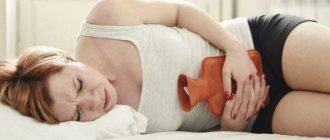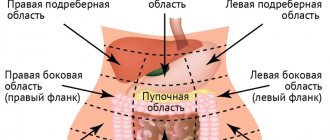An ovarian follicle is an element of the ovary. It consists of an egg cell, which is surrounded by a layer of epithelial cells and two layers of connective tissue.
During one menstrual cycle, only one follicle (sometimes two) matures in the body of a healthy woman. A mature ovary is necessary for its further fertilization, then the embryo is implanted into the endometrium of the uterine cavity and the child is born.
Unfortunately, today the problem of infertility is very popular. One of the causes of infertility is impaired follicle maturation. In such cases, an infertile woman seeks help from a specialist doctor. One of the most effective methods is in vitro fertilization (IVF).
It is during this procedure that the follicles are punctured to collect a mature egg.
What is a puncture?
When we talk about follicular puncture, we are talking about the process of extracting those eggs that are already mature from the ovaries using a hollow needle.
Then they can be artificially fertilized under artificial conditions. The more suitable eggs there are, the more likely a woman is to become pregnant. Even if one or more embryos do not survive, there is always the possibility that the spare ones will be more viable.
This process is carried out in different conditions - this can be a “test tube” IVF. You can also inject a single sperm into the egg under a microscope. The conditions are selected depending on what type of infertility the woman has.
If we are talking about IVF puncture, then it means the collection of an egg that has already matured. She is then transferred to an incubator before fertilization with sperm takes place. After this, the embryo can be transferred to the uterus.
IMPORTANT! For a successful operation, it is necessary to strictly adhere to all the requirements of the specialist and comply with all the necessary conditions. Before starting such a procedure, a doctor talks with each woman individually. From the results of this conversation and after passing the necessary tests, it becomes clear to the doctor what the determining behavior should be at all stages of this important procedure.
Ovarian puncture technique
The technique of ovarian puncture involves transvaginal access, in which instruments are inserted through the vagina. This route does not leave scars on the skin and is less traumatic compared to laparoscopy. The second indispensable condition for puncture is ultrasound control, which allows the doctor to operate the instruments extremely accurately in the patient’s pelvis and get into the desired follicle or cystic cavity. Such manipulations are not carried out blindly.
To puncture the ovary through the posterior fornix of the vagina, special gynecological speculums, syringes with long puncture needles, forceps, and forceps for grasping and fixing the mobile cervix are used.
After treating the genitals with a disinfectant, a speculum is placed in the vagina, opening the way to the cervix, which is fixed with forceps and retracted downwards. A large-diameter puncture needle is inserted into the posterior fornix thus opened, strictly in the middle, 1-2 centimeters deep. If there is fluid in the pelvis, it can be removed by puncture. Access to the ovary passes through the free abdominal cavity under the control of an ultrasound probe inserted transvaginally.
The posterior vault of the vagina is most convenient for puncture because the peritoneum there is closest to the vaginal walls, and by puncturing the wall of the organ in this place, the surgeon immediately enters the pelvic cavity.
The described surgical technique is used to obtain eggs during IVF, as well as puncture of an ovarian cyst if the size of the cavity is relatively small, there is no obvious inflammatory process in the acute phase and the doctor does not doubt the benignity of the formation.
After transvaginal access to the cyst, the cavity is punctured, its contents are removed for cytological examination, and up to 15 ml of ethanol is injected into the cyst, which provokes collapse and gluing of the walls of the cyst with subsequent scarring. The manipulation takes no more than an hour.
The widespread use of puncture as a method of treating ovarian cysts is limited due to the risk of dissemination of tumor cells if the formation turns out to be malignant, because non-invasive diagnostics do not always allow one to reliably exclude cancer.
Another problem with this treatment is relapses, which, according to various sources, occur in a third of patients after cyst puncture, and the older the woman, the greater the likelihood of re-growth of the cystic formation. For this reason, laparoscopic treatment is recommended in premenopause and later.
Puncture of the ovaries during IVF is carried out 35-36 hours after the woman is injected with the hormone human chorionic gonadotropin, which stimulates ovulation. Eggs are selected before the follicle ovulates, at a strictly prescribed time, which ensures good quality of the resulting cells.
The event is carried out according to the scheme described above, under general anesthesia. Using a puncture needle and under ultrasound control, the surgeon selects up to a dozen or more of the most suitable germ cells, removes them and carefully transfers them into a sterile tube. The operation takes about 15 minutes.
An important condition for IVF puncture is the presence of the spouse in the clinic, since fertilization is carried out as soon as possible after the cells are removed. On the same day, the fertility specialist usually reports the result of puncture of the ovarian follicles.
After the germ cells are collected, the patient comes out of anesthesia and may experience slight dizziness and nausea, and nagging pain in the pelvic area. Scanty bleeding is also normal after puncture of ovarian follicles. In case of severe pain, it is possible to use antispasmodics, and if the woman feels well, she goes home on the day of the operation.
Video: ovarian puncture during IVF
Is it possible to do?
Often before performing a puncture, a woman feels pain in the abdomen.
If the pain is not very severe, then there is no reason to worry too much. Many women are very afraid of the upcoming procedure, and therefore the pain in the abdominal area only intensifies. Of course, since a puncture is a kind of hole, when it is done, the doctor may touch something in the body, and all this can end badly.
In fact, there is no reason to be afraid of a puncture even with mild abdominal pain, because the operation itself is carried out in a completely safe way.
In any case, before proceeding with the operation, the doctor will perform an ultrasound of the abdominal cavity. Based on the data obtained, it will become clear what exactly caused the abdominal pain.
Indications
The indication for in vitro fertilization is female and male infertility. In the first case it could be
- tubal or tubo-peritoneal infertility (TPI) - the result of the absence or obstruction of the fallopian tubes,
- infertility caused by endometriosis,
- endocrine infertility, including polycystic ovary syndrome (PCOS) – if conservative treatment for 6-12 months does not produce results,
- infertility of unknown origin (idiopathic infertility), established after all the necessary studies have been carried out, the results of which are normal.
Male infertility may be caused by
- oligospermia – reduction in the amount of ejaculate,
- asthenospermia – decreased sperm count,
- teratozoospermia I–II degree – more than half of the pathologically altered sperm in the ejaculate.
It is impossible to predict how many follicles will be obtained in each specific case - normally there are 1-2, but during superovulation the number can increase to 10. Sometimes at least one follicle is enough, preferably with a diameter of about 20 mm.
What does this mean?
If a woman feels incessant pain in the abdominal area for several days, and even more so, weeks, then before performing a puncture, she should visit a doctor in order to clearly know what is the cause of the pain.
Particularly dangerous in this regard are abdominal pains that have a nagging nature and are aggravated by prolonged walking. It is important to determine as accurately as possible exactly where it hurts - a particularly dangerous sign is pain slightly above the pubis or to the side of it.
If a woman’s lower abdomen is tense or swollen in a certain way, this is a reason to consult a gynecologist. It’s one thing if you’ve started your period, then you shouldn’t worry, but if you don’t have it, but still have pain?
If you puncture the follicle in this condition, the consequences can be severe. For example, kidney disease (kidney inflammation) may begin.
Features of the technique
Follicular puncture during IVF is an operation in which mature eggs are removed from a woman’s body. In the future, they can be used for in vitro conception or for freezing. The follicle is a structural element. In its center is the egg, the female reproductive cell carrying a single set of chromosomes. It is covered with a layer of glycoproteins, epithelial cells and connective tissue.
Folliculogenesis, i.e. The continuous process of follicle maturation lasts until menopause. During this process, the eggs, under the influence of follicle-stimulating hormone from the pituitary gland, go through several stages of development. The most important phase for in vitro fertilization is the ovulation phase, which is initiated by the release of luteinizing hormone. To carry out fertilization, mature, healthy and viable oocytes are needed. To obtain them, different preparation methods are used. During IVF in a natural cycle, the doctor monitors the maturation of follicles using tests and ultrasound. In the long protocol, a woman's own hormonal function is suppressed while using specific medications to completely control ovulation. The short protocol also prescribes hormonal medications, but in smaller quantities.
Why is a puncture needed?
To determine the optimal time for follicle puncture, comprehensive monitoring is carried out using tests and ultrasound. After the doctor is convinced that the required number of oocytes have matured, puncture of the follicles for IVF is prescribed.
How long should you wait?
There can be no clear answer here; it all depends on the intensity of the pain and on the reason why it began to torment the woman. Once again it should be said that if the pain is minor, then there is no reason to cancel the puncture. But this applies only to those cases when the doctor conducted a thorough examination, as a result of which it turned out that the woman does not have any diseases. If the cause of such pain is a certain disease, then every effort must be made to cure it.
Preparation and contraindications
For follicular puncture for IVF to be successful, both partners must adhere to the doctor’s recommendations during the preparatory period. A woman, in addition to taking hormonal medications in accordance with the chosen protocol, must:
- drink multivitamins for the first trimester of pregnancy containing folic acid and vitamin E;
- refuse to take any dietary supplements or medications on your own;
- monitor the prevention of viral and infectious diseases;
- eliminate alcohol consumption and smoking;
- drink caffeinated drinks in moderation;
- eat a balanced diet, do not experiment with strict and mono-diets;
- do not visit the bathhouse or sauna, refrain from taking a hot bath;
- lead an active lifestyle without intense physical activity;
- 3-4 days before the planned puncture of the follicles, the woman should avoid sexual intercourse.
Before the puncture, you need to undergo preparation and rest more.
The woman must arrive for surgery without makeup or colored nail polish. Based on the shade of the skin and nail plate, the doctor can monitor changes in its condition, responding to alarming symptoms as quickly as possible.
A man needs to lead a healthy lifestyle throughout the entire period of IVF. Sexual rest is required for 5 days to provide high-quality biomaterial.
There are very few contraindications for transvaginal puncture; almost all of them are excluded at the stage of examination and admission to in vitro fertilization. The doctor may undergo surgery if he discovers a new inflammatory process of any localization or if the woman’s condition is unsatisfactory on the desired day for anesthesia and puncture.
What size should follicles be?
The size of the dominant follicle grows by several mm every day. When ovulation occurs, it normally reaches 18-24 mm in diameter. The follicles must be of this size in order to puncture them.
But if they are smaller, this is not a reason to worry. Follicles sometimes range in size from 10-22 mm. Their diameter does not indicate the presence of an egg in them. It may be the other way around - the small ones will contain eggs, but the large ones will not.
Efficiency of the procedure
Several factors may affect the effectiveness of an in vitro fertilization program.
- quality of examinations and preparation for the IVF protocol
- quality of execution of each stage separately
- quality of embryo transfer into the uterine cavity and management of the subsequent period
In this complex process, a lot depends on the level of qualifications of specialists and the equipment with which the clinic is equipped. The medical staff and equipment of the Central Clinical Hospital of the Russian Academy of Sciences meet the most stringent requirements of modern international standards, while the price of services remains affordable for patients.
How many should there be in an ovary?
A healthy lifestyle is a guarantee of successful conception
after puncture of the follicles and implantation of the embryo into the uterus. Sports activities in normal quantities are definitely needed.
Don't overload yourself intensely. The doctor can select special gymnastics to perform several times a week for 30-40 minutes.
Walking in the fresh air will be useful. It is better to walk away from the roadway - in the park
, outside the city in a forest or meadow. The duration of stay on the street should be at least 1.5-2 hours a day.
Preparing for follicle puncture is a responsible undertaking. The success of fertilization depends on this. If a man and woman carefully prepare for the procedure, the chances of conceiving a child will increase significantly.
Follicular puncture is a procedure aimed at obtaining mature eggs from the ovaries. Subsequently, they will be fertilized and implanted as embryos into the woman’s uterus to become pregnant.
Egg puncture during IVF is not required if cryopreserved, including donor, biological material is used.
With IVF, follicle puncture is most often performed on days 13-15 of the menstrual cycle, if the program takes place in a stimulated cycle. Puncture of follicles in the natural cycle involves constant ultrasound monitoring of their maturation.
The doctor chooses the optimal time when follicle puncture can be performed. It is impossible to say in advance what day of the cycle it will be, it depends on the results of tests and ultrasound.
Regardless of what day the follicle puncture is performed, the resulting eggs will be fertilized on the same day. After another 4-5 days, the embryos will be transferred to the uterus.
Egg puncture can be performed not only as part of an IVF program, but also if a woman wants to save them for the future (for example, before radiation therapy for cancer). Another indication for the procedure is the woman’s donation of donor biological material.
Preparation for follicle puncture
A woman needs some preparation for follicle puncture. IVF is more likely to result in pregnancy if the patient follows all the doctor’s recommendations.
Before follicular puncture you should not:
- be sexually active for 3-4 days;
- drink alcohol;
- visit a bathhouse or sauna.
In the morning you need to show up for the procedure without makeup or perfume, without contact lenses, without jewelry, on an empty stomach. You should not drink since the evening of the previous day so that your bladder is empty at the time of surgery. In the morning (at home) you should take a shower.
Egg puncture is performed under general anesthesia, so you should not be afraid of this procedure - you will not feel anything. The entire follicle puncture procedure takes from 10 to 15 minutes.
Intravenous anesthesia at VitroClinic is carried out using modern medications, the choice and dosage of which is selected individually. This ensures maximum safety and good tolerance by our patients during any surgical procedure.
The puncture should not be perceived by patients as a surgical operation. This is simply the insertion of a thin needle into the follicle and collection of the eggs.
The puncture is closer in essence to the procedure of taking blood from the ulnar vein than to surgery, despite anesthesia during follicular puncture. The manipulation is carried out under ultrasound control, so the risk of damage to the tissues surrounding the ovary, including nerves or blood vessels, is virtually eliminated.
Many women only undergo follicular puncture once. IVF does not always result in pregnancy the first time, but if enough eggs are obtained, they can be fertilized and the embryos frozen for use in subsequent cycles.
How you feel after follicular puncture
Many women are very worried if they have to undergo follicle puncture during IVF - reviews on various forums eloquently testify to this. There's really no reason to worry.
During the procedure, the patient is under anesthesia and therefore does not feel anything. The condition after follicular puncture in women is generally satisfactory, with the exception of some temporary side effects of anesthesia (drowsiness, weakness).
If necessary, the attending physician can issue a certificate of incapacity for work.
There may be bloody discharge from the vagina and pain after puncture of the follicles. They are monotonous, low intensity, pulling, localized in the lower abdomen. If pain occurs, after follicular puncture you can take painkillers (for example, paracetamol) that do not belong to the NSAID group.
NSAIDs (aspirin, ibuprofen, etc.) have an antiplatelet effect and increase the risk of bleeding from the vagina after follicular puncture.
A few words about how to behave after follicle puncture. I need some rest in the next 24 hours. You cannot engage in sports or physical labor. It is forbidden to drive a car on this day - the reaction worsens due to recent anesthesia.
If the doctor prescribed any medications, take them. If you experience symptoms that worry you, contact your doctor by phone.
VitroClinic doctors are always in touch with their patients by phone or email.
After follicle puncture
What happens after puncture of follicles with eggs?
After puncture, the egg will be fertilized on the same day with the sperm of the husband (or donor) in the laboratory. Which fertilization method (IVF, ICSI, PIXI) will be chosen is up to the embryologist to decide. It depends on the quality of the sperm.
This is followed by the stage of embryo cultivation in an incubator under the strict supervision of embryologists.
And in a few days you will have to come to the clinic again for
At each of its stages. You will be able to find out what regime should be followed, what can and cannot be done at the stage of superovulation stimulation, after puncture and after embryo transfer.
The IVF procedure can be divided into four important stages:
- Induction of follicular growth
- Puncture of stimulated follicles
- Embryo transfer
- Post-transfer period
This stage takes on average 8-12 days and includes injections of drugs to stimulate follicle growth. Gonadotropin drugs are used (Menopur, Puregon, Gonal-f, Elonva, etc.), as well as drugs to suppress the pituitary gland - gonadotropin-releasing hormone agonists and antagonists (diferelin, decapeptyl, cetrotide, orgalutran).
At this stage, follicle growth is monitored and, if necessary, the dose of prescribed medications is adjusted. Next, when the follicles reach a diameter of 18-20 mm, an ovulation trigger (hCG drug or gonadotropin agonist) and a puncture date are assigned.
While stimulating follicle growth, it is recommended to lead a measured, healthy lifestyle, spend more time in the fresh air, and eliminate physical activity. It is also advisable not to be sexually active. It is important to understand that by prescribing stimulation, we achieve the growth of all existing antral follicles, so sometimes more than 10 of them can grow. The ovaries increase in volume, which can lead to a feeling of heaviness and discomfort in the lower abdomen.
You cannot take laxatives or do a cleansing enema before a puncture without a doctor’s permission.
Follicle puncture is performed under general anesthesia and takes no more than 20 minutes. After egg retrieval, the woman remains under observation in the ward for 2 hours, then is discharged home with doctor’s recommendations.
Driving after the procedure is prohibited.
On this day, luteal phase support and preparation for embryo transfer are prescribed.
For this purpose, progesterone preparations are prescribed (progesterone, utrozhestan, kraynon, iprozhin), duphaston, in some cases estrogens (divigel, proginova, estogel), and hCG preparations.
On the first day after puncture, a woman may experience moderate pain in the lower abdomen. This is normal, since during puncture the ovarian tissue is injured by the needle, which can cause pain in the future. But if pain occurs, you should not take painkillers, since their therapeutic effect can smooth out the picture of a possible complication, and help may be provided with a delay. If you experience intense abdominal pain, as well as weakness, dizziness, or bleeding, you should contact your doctor.
After the puncture, sexual rest is required for two weeks. At this time, you should also not take a hot bath, visit the sauna, solarium, swimming pool, or gym.
The next day after the puncture, until the moment the blood is tested for hCG, it is recommended to drink a large amount of still water or fruit drink without sugar (up to 3 liters). Food should contain a lot of protein and a minimum of coarse fiber (raw vegetables, fruits, legumes, brown bread excluded). It is also necessary to limit coffee, strong tea, cola, and alcoholic beverages are not allowed.
After puncture of a large number of follicles, sometimes from 2-3 days, complaints characteristic of ovarian hyperstimulation syndrome may appear: a feeling of fullness and bloating, nausea, vomiting, diarrhea, shortness of breath, rapid heartbeat (tachycardia), dry cough. If such signs appear, you should immediately consult your doctor.
The embryo transfer procedure is usually performed in the afternoon and in a standard situation does not require special preparation.
After embryo transfer, you can rest in the room for an hour.
This period lasts 14 days, after which a blood test for hCG is taken to diagnose pregnancy. These days, we recommend issuing a certificate of incapacity for work so that the woman can follow all the necessary recommendations. During this period it is necessary:
- Continue to follow the drinking regime and diet;
- Avoid physical activity, do not engage in fitness, but also do not lie down all day; short walks in the fresh air with a total duration of at least an hour are suitable;
- Do not stay in a forced position for a long time (for example, sitting) - this contributes to stagnation of blood in the pelvis;
- Try to feel only positive emotions and confidence in success.
In some cases, after embryo transfer, spotting and spotting may appear, which does not exclude pregnancy. In this case, you cannot cancel drug support and try to contact your doctor as quickly as possible.
If your blood test is positive for hCG, you must contact your doctor to receive further recommendations on treatment and when to discontinue some medications. In addition, the doctor introduces the woman to the monitoring plan for pregnant women after the IVF program.
In the case of a negative test for hCG (that is, in the absence of pregnancy), support medications are usually discontinued, and a consultation with the attending physician is recommended after the next menstruation . After an IVF cycle with stimulation, the ovaries can return to normal within 1-2 months. In some cases, a doctor prescribes combined estrogen-gestagen drugs for therapeutic purposes.
In vitro fertilization is a complex procedure during which a fertilized egg is implanted into a woman's uterine cavity. Before implantation, it is taken from the woman’s ovaries and fertilized with the partner’s sperm. Weaning occurs by piercing mature follicles with eggs and their further extraction. This article will discuss the principles of follicle puncture, the basics of body recovery, possible complications and well-being after this procedure.
Pain relief during follicular puncture
General or local anesthesia for follicular puncture is used upon the joint decision of the doctor and the patient, that is, she can insist on one or another method of pain relief or refuse it. When determining the method of anesthesia, it is preferable to choose one of two options:
- general anesthesia using a facial or laryngeal mask;
- intravenous anesthesia using Propofol and Rapifen.
If the puncture is performed laparoscopically, intubation and necessary monitoring of vital functions are required.
Local anesthesia is not used. If a woman refuses general anesthesia, an hour before the intervention, she is given an injection of an anesthetic drug or given orally in the form of a tablet. Performing a puncture without anesthesia is justified if there are few mature follicles and the ovaries are well accessible. Most often this is resolved immediately before the intervention during ultrasound guidance. It is believed that the administration of anesthesia may adversely affect the quality of the eggs obtained and reduce the likelihood of a successful pregnancy in the future. Therefore, in many foreign clinics anesthesia is not used for follicular puncture.
Before administering anesthesia, the doctor must collect a so-called allergy history - information about the tolerance of drugs, food and other products. You should think in advance and remember which medications the patient did not tolerate well previously (for example, during dental treatment). If there are several such medications, it is advisable to prepare a list of them. This will make the doctor’s work easier and reduce the likelihood of complications.
How long do the ovaries bother you after IVF?
After IVF, regardless of the outcome, the ovaries may still bother the woman for several months with pain, discomfort, weakness and malaise until complete recovery. This occurs due to their hyperfunction while taking hormonal drugs. The ovaries after IVF during pregnancy are in an active state until the 12th week. But in most cases, a woman receives hormonal therapy to maintain pregnancy, so gradually the function of the paired organs weakens, they restore their previous size and behave calmly.
If IVF is unsuccessful, recovery may take several months. It all depends on how many follicles were punctured and how many cysts formed in their place. If ovarian function has not returned to normal within 1-2 menstrual cycles, doctors prescribe restorative therapy. Here it is important to prevent the transition of a mild stage of hyperfunction to a severe one, with the development of serious pathologies.
Rehabilitation: restoration of ovaries after unsuccessful IVF
The female body, after unsuccessful IVF, needs rest. This means not only physical and emotional peace. The reproductive system needs rest. To do this, doctors prescribe hormonal contraceptives that partially block the functioning of the hypothalamus-pituitary-ovarian system.
If, after an unsuccessful procedure, the menstrual cycle is disrupted and menstruation does not occur, this indicates the development of a hormonal imbalance. This is how the body reacts to stimulation of ovulation at the first stage of IVF. In this case, the woman will need more time to recover. The following will help maintain overall health and recovery:
- taking a complex of vitamins with a mandatory content of tocopherol;
- acupressure;
- swimming;
- mud therapy;
- other methods of alternative medicine.
The doctor may stop taking contraceptives after the ultrasound shows the ovaries are clean and free of cysts. As a rule, after 3 months the body recovers, and the woman is ready for a repeat protocol.
It happens that under the influence of stimulating hormones at the first stage of IVF, the ovaries greatly increase in size and their mobility increases. In this case, there is a high risk of ovarian torsion with further tissue death. To prevent this, regular examinations by a doctor and ultrasound are needed. Other complications include inflammation and bleeding from the ovaries.
Stages of implementation
The process of in vitro fertilization is divided into the following stages:
- Preparing men and women for it.
- Examination, consultation with a doctor.
- Hormonal stimulation of the ovaries.
- Follicle puncture.
- Obtaining sperm from a man, removing sperm from it.
- Placing the egg and sperm in a special environment until they fuse.
- Growing an embryo until it transforms into a blastocyst.
- Implanting it into the uterus of the expectant mother.
If necessary
, auxiliary manipulations are carried out - selection of the most active sperm, genetic analysis of the fertilized egg. When the implanted embryo does not take root, all stages are repeated again.
How it happens
The puncture is performed one and a half days after the administration of hCG.
- The pre-dressed patient is placed on the couch, and the doctor treats her genitals with an antiseptic solution.
- The anesthesiologist gives the woman anesthesia and remains in the operating room for observation.
- The doctor inserts a special hollow needle into the vagina with an ultrasound sensor attached to it, pierces the upper wall of the vagina with it and brings the needle to the ovary. He examines the follicles using a sensor, pierces with a needle those that have reached a size of 18 mm, and takes their contents.
- The eggs, together with the liquid follicular mass, enter the incubator, where they are initially stored and then transported to the embryologist.
Important!
It is recommended to remove as many eggs as possible during one puncture, so that if it is necessary to repeat IVF, there will be no need to perform hormonal therapy and puncture again. The removed and fertilized eggs can be frozen in a cryochamber and sent for storage until required. - The embryologist separates the eggs from the fluid, epithelial cells and blood, determines their viability and fertilizes the patient's partner with a sperm dose. Fertilized eggs are returned to the incubator for growing.
Video: how follicle puncture occurs










